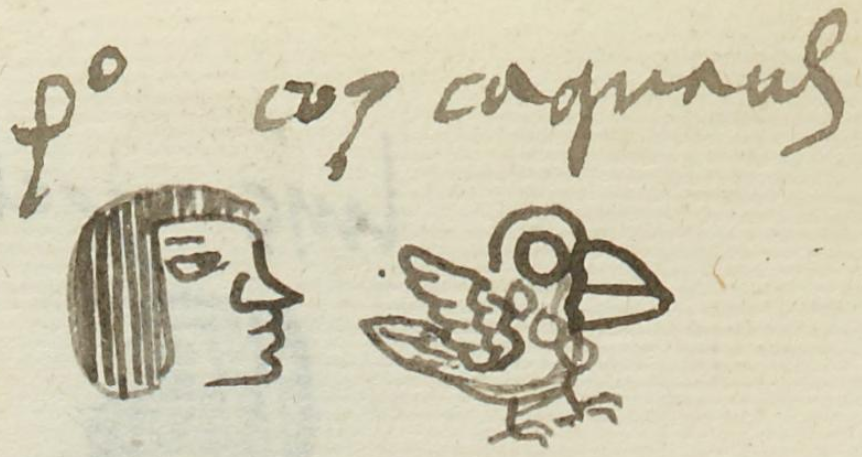Cozcacuauh (MH653r)
This black-line drawing of the compound glyph for the personal name Cozcacuauh ("King Vulture," attested here as a man's name) shows an eagle in profile, looking toward the viewer's right. Its eye appears to be open. The necklace (cozcatl) on the eagle's neck is a phonetic indicator that this is not an eagle but a cozcacuauhtli, vulture.
Stephanie Wood
This is a day sign in the tonalpohualli, the 260-day divinatory calendar. Normally, the vulture would have a numerical companion from 1 to 13. Because of colonial edicts to stop using the tonalpohualli as a source for names, one thing that happened is that the companion numbers were dropped, perhaps as a stopgap measure to reduce the sacred nature of the name. See Norma Angélica Castilla Palma, "Las huellas del oficio y lo sagrado en los nombres nahuas de familias y barrios de Cholula," Dimensión Antropológica v. 65 (sept.-dic. 2015), 186.
Stephanie Wood
po cozcaquauh
Pedro Cozcacuauh
Stephanie Wood
1560
Jeff Haskett-Wood
buitres, águilas con collares, pájaros, plumas, calendarios, días, tonalpohualli, nombres de hombres

cozcacuauh(tli), vulture, https://nahuatl.wired-humanities.org/content/cozcacuauhtli
cozca(tl), necklace, https://nahuatl.wired-humanities.org/content/cozcatl-0
cuauh(tli), eagle, https://nahuatl.wired-humanities.org/content/cuauhtli
Buitre
Stephanie Wood
Matrícula de Huexotzinco, folio 653r, World Digital Library, https://www.loc.gov/resource/gdcwdl.wdl_15282/?sp=388&st=image
This manuscript is hosted by the Library of Congress and the World Digital Library; used here with the Creative Commons, “Attribution-NonCommercial-ShareAlike 3.0 License” (CC-BY-NC-SAq 3.0).







